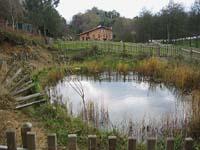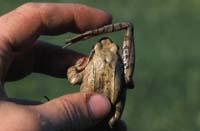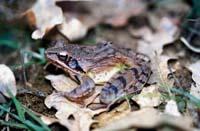What to do to save amphibians?

Although we have not been successful in the dissemination, as for the technique, the methodology is increasingly broad. XX. At the end of the twentieth century, in the face of habitat destruction and population disappearance, a practical branch called Amphibian Conservation was created. Since then, experiences have multiplied.
The protocols of action are the basis of the measures designed for management. These should be adapted to the characteristics of the local environment and the local amphibian community. Vital population monitoring programs should be performed for long time series (15-20 years and older), at least to obtain reliable data from their evolution. It should be noted that each threatened population is in a concrete situation. Therefore, it is necessary to design projects based on specific research.
For example, it should be taken into account that the seasonality of the wetlands of the Basque Country is usual, except in the case of large artificial reservoirs. And amphibians, 'old' local, have adapted to the water systems of the season. But it has not occurred to amphibians that the warming of the planet could reduce the duration of these wetlands. However, if the wells are dried before, the larval cycle would be unfinished, which would cause a deterioration of the populations.
In the face of such incidents, managers should be attentive to the correction of wetland creation projects. One of them can be the creation of wells of greater capacity, that is, a greater accumulation of water to last longer. And it is not a matter of building permanent ponds anywhere, as these types of wetlands are often rare in the natural environment.
In addition, new threats to amphibians can appear in permanent pools, such as the introduction of foreign species. As you well know in Europe, in these puddles are released on too many occasions fish, turtles and river crabs, which reduces or eliminates amphibian populations.
Another alternative can be the formation of humid zones adjacent to the existing ones, as complement to the reproduction. Likewise, it would be very suitable for recovery projects, especially on the Atlantic side, the conservation of native forests with the greatest number of possible wetlands.

Steps taken
We do not start from zero, but attempts to recover amphibians have been scarce. Conservation is not rooted in our habits. Therefore, to show that the management of threatened species is the responsibility of the administration has not been easy, less even beyond the emblematic birds or mammals.
Pioneers were the efforts made in the years 80 and 90 of the last century to know the species of our territory and its distribution. The direct consequence of these efforts were the atlas and some published studies that allowed us to know the state of amphibian populations. But the information is obsolete and accelerates a lot today, taking into account that the natural environment is being transformed continuously and uncontrollably. To be able to approach it through management plans, it is essential to have research teams specialized in conservation.
Conclusion of the conclusion Conclusion

The current planning of the territory does not favor the future of amphibian populations. Urbanism commands and makes new infrastructures everywhere. The rural environment, due to the concentration parcelaria, is directed towards a homogenization, eliminating non-usable areas such as wells and river margins. As mentioned above, the awareness of society will only focus administrative policy on the recovery of natural spaces and emblematic species. This is the case of alpine triton, painted toads or pyrenean forest frog. These are unique species, with populations threatened but on which management is not yet carried out, although there are projects.
At the same time, the research groups are new, they are forming and preparing, so you can not follow up on the populations. Some populations may be losing in some places, but this loss is not studied. In our case, short-term extinction is not expected, but the number of threatened populations is increasing and the scope of the problem is unknown.

The Basque panorama can be differentiated in two aspects. On the Atlantic side, it seems more difficult to address population management. As it is an area of high human density, the conservation model resorts to islands formed by communities of local amphibians. This model is very dangerous, because it greatly limits the relationship between populations, but given the existing territorial organization, is there another alternative? The peculiarities of the Mediterranean slope -- extensive plain crossed by mountains -- can alleviate management problems. The limits to overcome would be the destruction of ecosystems and their diversity and the pollution produced by agriculture.
The only viable model on both sides is to properly design amphibian breeding wetlands. After centuries of drying and filling of wetlands, the resolution of the current problems of aquatic habitats should be an absolute priority. We should leave water quality for a second phase. The road will be as long as difficult, so let's start as soon as possible.
Websites of interest:
http://amphibiaweb.org
http://www.sosanfibios.org
http://www.open.ac.uk/daptf/index.htm
http://www.herpetologica.org








